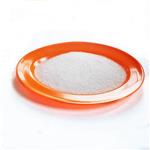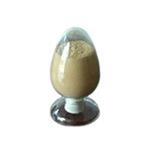Chemical Properties
BEIGE TO GREYISH POWDER OR FLAKES
Uses
An impurity of pramipexole production
Uses
2-Aminobenzothiazole was used in the synthesis of cobalt(II) picrate mixed-ligand complexes. It was used to study adsorption of biologically significant 2-aminobenzothiazole molecules on colloidal silver particles using surface-enhanced raman scattering spectroscopy.
Definition
ChEBI: 2-aminobenzothiazole is a member of benzothiazoles.
General Description
Odorless gray to white powder.
Air & Water Reactions
Insoluble in water.
Reactivity Profile
An amine, organosulfide. Organosulfides are incompatible with acids, diazo and azo compounds, halocarbons, isocyanates, aldehydes, alkali metals, nitrides, hydrides, and other strong reducing agents. Reactions with these materials generate heat and in many cases hydrogen gas. Many of these compounds may liberate hydrogen sulfide upon decomposition or reaction with an acid. Amines are chemical bases. They neutralize acids to form salts plus water. These acid-base reactions are exothermic. The amount of heat that is evolved per mole of amine in a neutralization is largely independent of the strength of the amine as a base. Amines may be incompatible with isocyanates, halogenated organics, peroxides, phenols (acidic), epoxides, anhydrides, and acid halides. Flammable gaseous hydrogen is generated by amines in combination with strong reducing agents, such as hydrides.
Fire Hazard
Flash point data for 2-Benzothiazolamine are not available; however, 2-Benzothiazolamine is probably combustible.
Biochem/physiol Actions
2-Aminobenzothiazole has local anaesthetic action and has numerous applications in human and veterinary medicine.
Purification Methods
The thiazole cystallises from a H2O, aqueous EtOH, *C6H6 or pet ether. The hydrochloride crystallises from dilute HCl and has m 240.5o. [Beilstein 27 H 182, 27 III/IV 4824.]






